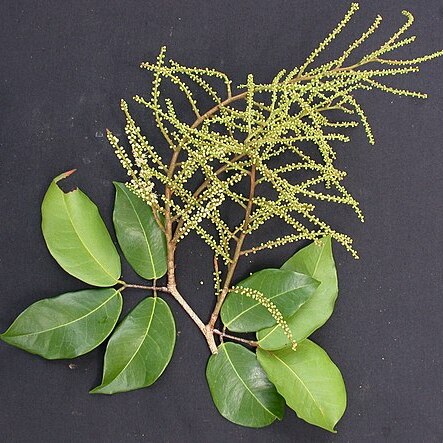A tall tree. The trunk is straight and does not have buttresses. It usually only has branches high up. It grows 50 m tall. The crown is dense. The leaves have 4 leaflets that are unequal on either side. They are shiny on top. The flowers are small and white. They are on long stalks. The fruit are flat, round, brown pods. They are curved in on one side. They have one large seed.
bicular, biloctular, loculi markedly separated by the connective; ovary subsessile, lightly lanose marginally, with a short attenuate style and inconspicuous stigma. Legume suborbicular, up to 10 cm. long and almost as wide, prominently veined, verrucose, lepidote at least in youth; single seed large, flat, almost filling the pod.


